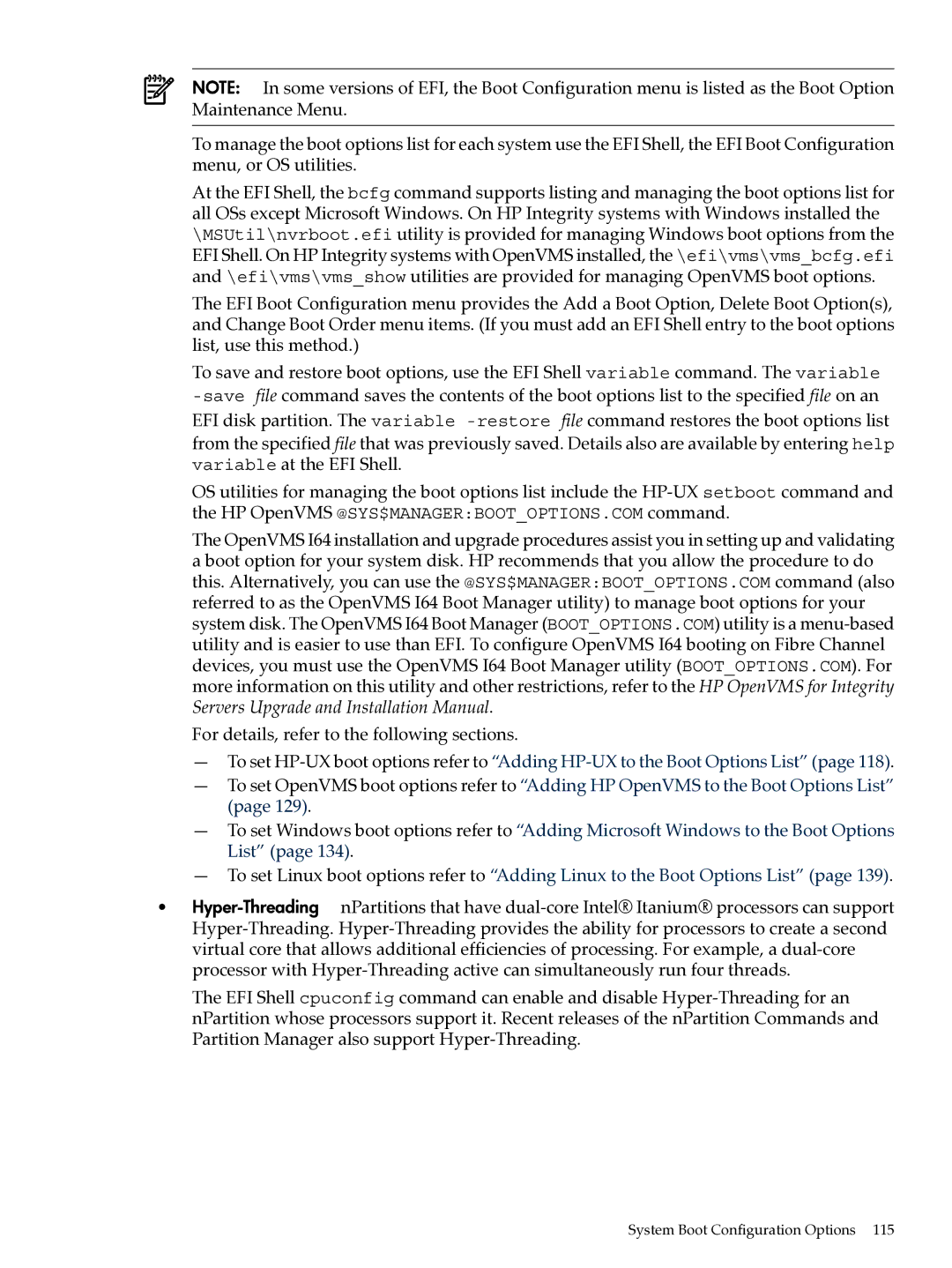NOTE: In some versions of EFI, the Boot Configuration menu is listed as the Boot Option Maintenance Menu.
To manage the boot options list for each system use the EFI Shell, the EFI Boot Configuration menu, or OS utilities.
At the EFI Shell, the bcfg command supports listing and managing the boot options list for all OSs except Microsoft Windows. On HP Integrity systems with Windows installed the \MSUtil\nvrboot.efi utility is provided for managing Windows boot options from the EFI Shell. On HP Integrity systems with OpenVMS installed, the \efi\vms\vms_bcfg.efi and \efi\vms\vms_show utilities are provided for managing OpenVMS boot options.
The EFI Boot Configuration menu provides the Add a Boot Option, Delete Boot Option(s), and Change Boot Order menu items. (If you must add an EFI Shell entry to the boot options list, use this method.)
To save and restore boot options, use the EFI Shell variable command. The variable
OS utilities for managing the boot options list include the
The OpenVMS I64 installation and upgrade procedures assist you in setting up and validating a boot option for your system disk. HP recommends that you allow the procedure to do this. Alternatively, you can use the @SYS$MANAGER:BOOT_OPTIONS.COM command (also referred to as the OpenVMS I64 Boot Manager utility) to manage boot options for your system disk. The OpenVMS I64 Boot Manager (BOOT_OPTIONS.COM) utility is a
For details, refer to the following sections.
—To set
—To set OpenVMS boot options refer to “Adding HP OpenVMS to the Boot Options List” (page 129).
—To set Windows boot options refer to “Adding Microsoft Windows to the Boot Options List” (page 134).
—To set Linux boot options refer to “Adding Linux to the Boot Options List” (page 139).
•
The EFI Shell cpuconfig command can enable and disable
